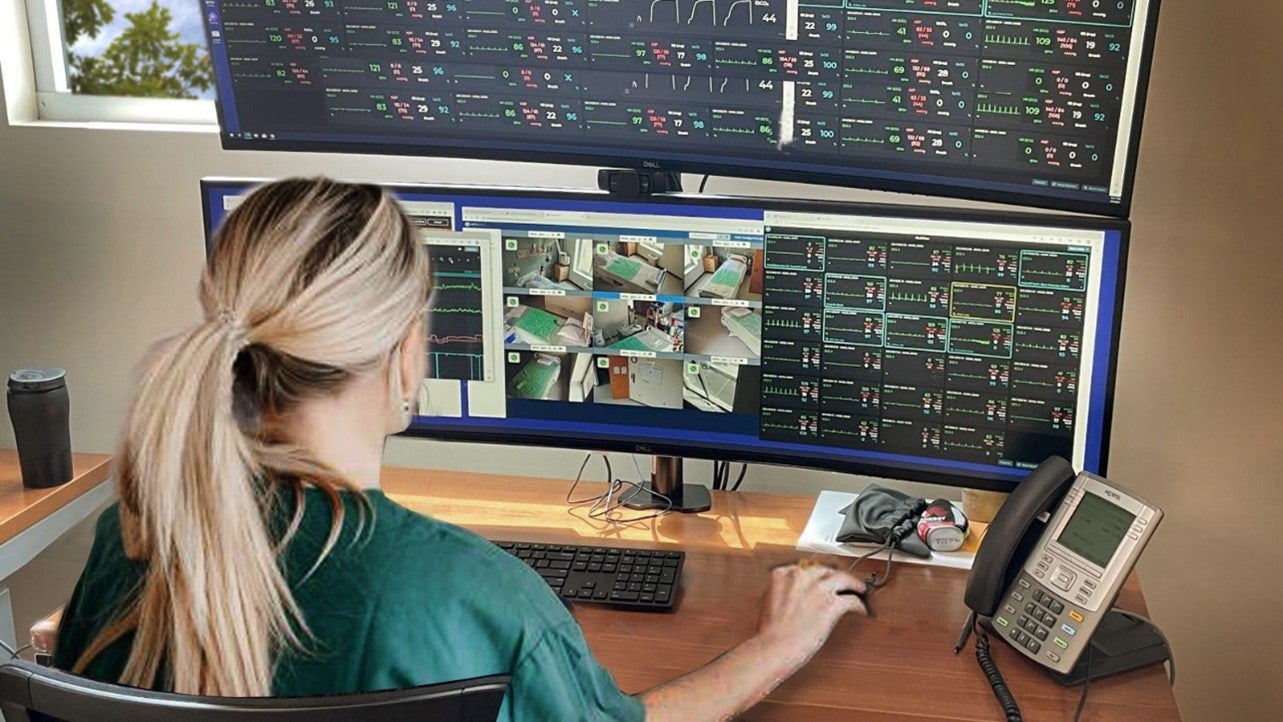

Guthrie Clinic Adds Virtual Care Hub to Address Nursing Shortage, Boost Patient Access and Safety

The prospect of closing beds was a wake-up call to the leadership team at Guthrie Clinic in Sayre, Pennsylvania. Its clinical workforce dropped by 43% between April 2022 and April 2023, patients were waiting for intensive care unit beds and burnout was rising among remaining staff.
In the case study “How Guthrie Clinic resolved its nursing shortage, boosted patient satisfaction and netted savings,” Guthrie leaders detail how the shift to a virtual, team-based approach to care extends the reach of bedside nurses, attracts new nurses, creates a culture of collaboration and improves patient monitoring and satisfaction.
Evaluating the ROI for a Tech-Enabled Virtual Care Team
After analyzing costs, staffing needs and tech options, Guthrie’s nursing leaders proposed a centralized command center, consolidating on-site staff and hiring experienced virtual nurses and intensivists. In April 2022, Guthrie Clinic launched its Pulse Center, a command center that allows remote nurses to monitor patients visually using a software-based monitoring and analytics platform, cameras and two-way audio communication.
Guthrie, an Epic customer, primarily used its electronic health record for documentation and added camera capabilities from artificial intelligence (AI) company Artisight and the Sickbay clinical intelligence platform from Medical Informatics Corp. to integrate real-time data from medical instruments. The integrated platforms help to streamline documentation and expedite patient transfers.
Guthrie’s value proposition:
- In the center’s first year, Guthrie saved $7 million in labor costs by reducing the number of traveling nurses from 172 full-time equivalents to 98.
- Nurse turnover rates fell from 25% to 13% and nurse satisfaction rose.
- Retaining experienced nurses and providing a career path beyond the bedside improves patient safety and outcomes, raises patient satisfaction, and provides guidance and support to bedside nurses.
4 Keys to Developing a Successful Virtual Care Model
1 | Integrate the virtual care team into the delivery model.
Design the command system around the concept of a care team. Take time to optimize workflows and streamline processes. Virtual care notably expands and enhances patients’ access to health care services.
Takeaway
Prioritize immediate needs such as monitoring critical care patients, and then med-surg units. Virtual staffing ratios might increase with risk scores.
2 | Shift tasks that can be completed remotely to virtual nurses.
Remote nurses are assigned specific patients to monitor and assist, making them a part of regular treatment workflows, and can act as mentors for less experienced bedside nurses. Virtual nurses document patient histories, manage medications, provide extra layers of observation by helping to detect potential health issues early, and update families about patient conditions.
Takeaway
Remote roles add to nurse staffing flexibility by allowing for broader staff reallocation, reaching a wider applicant base and retaining valuable in-house expertise. Less time spent on patient documentation and more time providing hands-on care lead to more satisfied patients and families.
3 | Involve bedside staff in program design.
To address concerns and gain support, incorporate internal staff in making decisions and executing the rollout.
Takeaway
To secure staff buy-in, foster a supportive team atmosphere and celebrate early successes.
4 | Embrace technology advancements.
Affordable technology is readily available, and AI advancements can help teams evolve.
Takeaway
Be on the lookout for technologies that can extend the reach of the care team.



